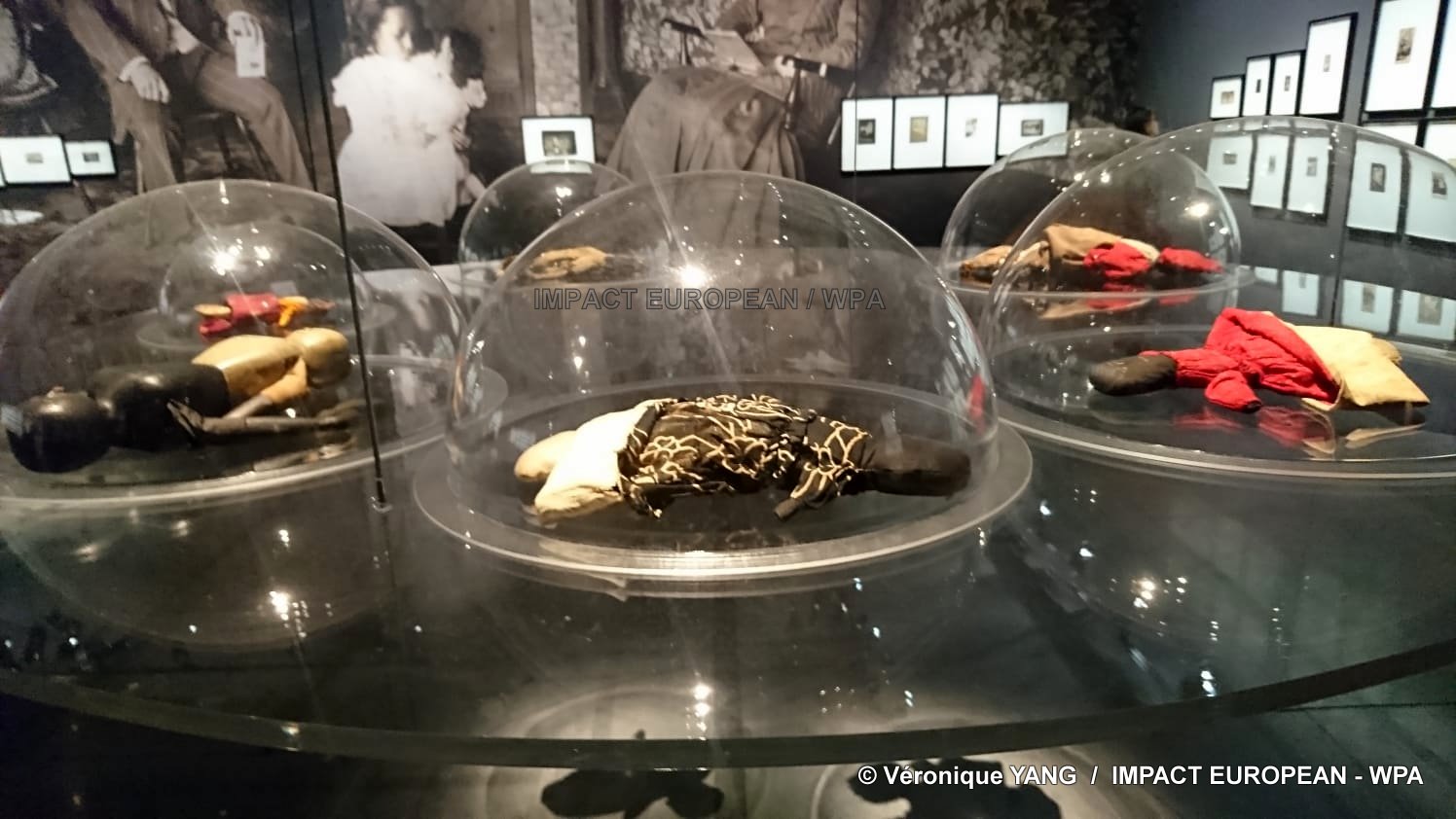For the first time exposed to International Mingei Museum of San Diego in 2015, the collection of headstocks of Deborah Neff crossed the borders of the United States for Europe, particularly Paris at the Red House.
This collection gathers 200 black headstocks out of fabric, wooden or leather created by anonymous Afro–Americans in the years 1840–1940; it shows the cultural, political history and close friend of the American Blacks, maternity and childhood. All the headstocks are single parts carried out artisanalement and transmitted from generation to generation south north of country.
Whereas the headstock represented the white stereotype, the afroaméricains created a headstock with their image, more than one European model tinted in black. For them, it was a question of identifying these headstocks with the black children by including a policy issue there since the middle of the 19th century.
From the years 1910, the headstocks start to be manufactured thus marking resistance against slavery, the segregation, racism with the daily newspaper. For some of enter they, one finds the least details, of the button of the waistcoat to the underskirt of lace. All the social classes are represented but also all the age brackets going from the simple headstock to the statuette of religious ritual from Africa or funerary.
The collection Déborah Neff, American lawyer based in the state of New York was made up during 25 last years. She represents headstocks entirely hand made and their black or brown color makes a scarcity of it. Jointly, one can discover 80 photographs representing of the American children with their headstocks, object present in all the cultures since millenia by transmitting the statutory values in which the child grew.
It is in a fair of antiquities in Atlanta that Deborah Neff discovered there is more than 25 years, its first black headstock manufactured with the hand. Today, one counts more than one thousand of specimen in his collection where one can discover also there self–educated works of contemporary artists or textile productions of the same afroaméricains authors such as the quilts–patchworks. As the visit, one detects the presence of the memory of the American African women who are at the base of black feminism in the USA and the free trade movements of the beginning of the 20th century. In spite of that, it is almost impossible to know which is the author–E–S of these headstocks that one can compare with mirrors of the company where the children took them for babies.
The exposure reflects the company of the time when the white took black maidservants and moved away them as of theirs to raise their children; this is why certain details on these headstocks leave think that they are these same black women who manufactured them.
On February 27th with the Museum of the Branly quay, in the presence of Deborah Neff, was held an international symposium “Black Frauds” with intellectual Afro–Americans, anthropologists, artists – of which the sculptor Alex Burke, who uses coloured fabric headstocks – and the curious ones. It provided tracks on a little documented phenomenon.
Hélne Joubert, person in charge of the African heritage of the museum analyzed the headstocks resulting from the African cultures that the Westerners regard sometimes as fetishes or toys, with semi way between crowned and the layman.
Patricia Williams, professeure of right to the university of Columbia interprets the direction of the two–tone headstocks with two heads, called “Topsy Turvy” like emblematic of the US company. She recalls that the black young girls are more precociously sexualized and considered less “innocent” being even victims of vaginal excavations by the police. These headstocks with two reversible heads are very important, showing on a side a bust and a black face and white on other side, in theory separated by a skirt. They could represent for a white child, his white mother and her black nurse between the years 1920 and 1930. They are either out of cotton, or out of wood.
The exposure “Black Frauds” to the Red House” finishes on May 20th. Before Paris it was in Davenport in the USA in 2017.

















Share this content:



Plus d'histoires
The Zelensky Couple’s European Tour for Peace
YouCare Exhibition: When Art and Celebrities Unite to Save Animals
When the History Fair Reminds Us That Memory Is an Act of Resistance